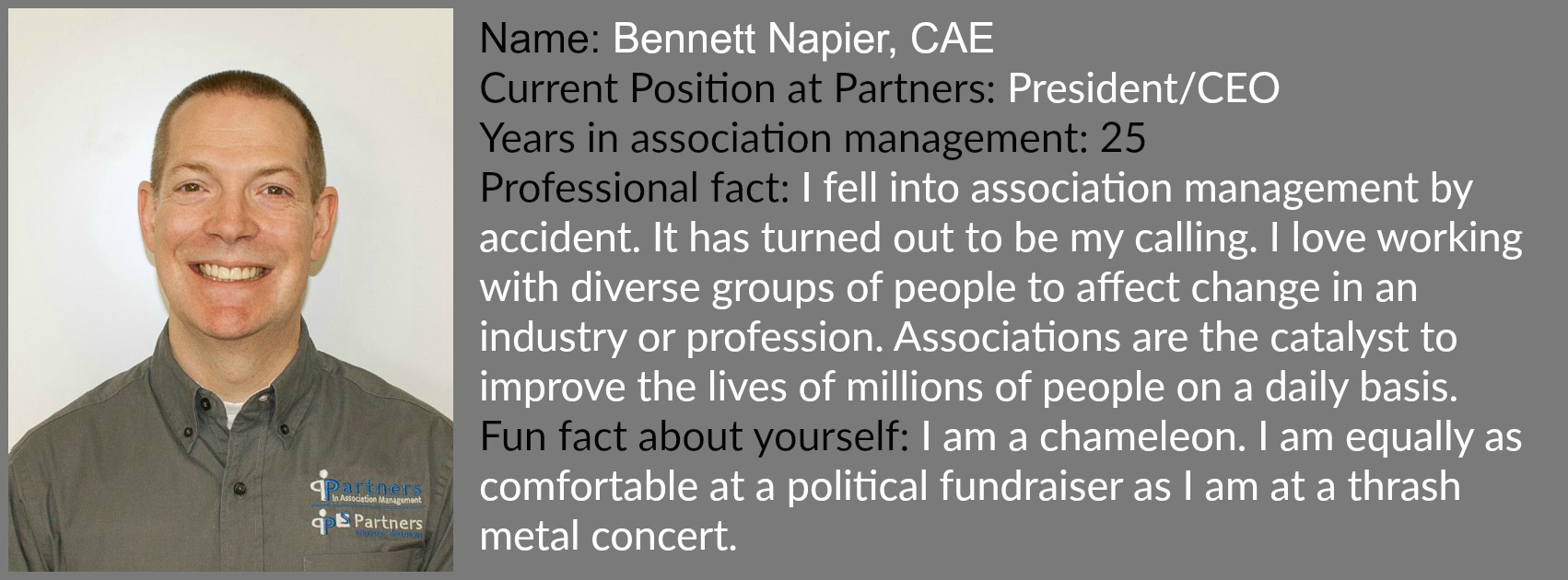Column originally published in the Tallahassee Democrat, September 2017 on Notes on Non Profits (http://www.tallahassee.com/story/life/causes/2017/09/10/find-new-ways-invigorate-your-organization/647385001/)
Question Posed to the Column:
“Many nonprofits are membership based and rely on dues and conference revenue to survive. For example, I am active in a national association about to celebrate its 35th anniversary. Our membership is aging out and young professionals are not joiners. And as travel funds disappear, they do not attend conferences anymore. I know this is a universal concern for many professional organizations. Your thoughts and advice?”
Your question is primarily directed at challenges facing not for profit (501 (c)(6) associations rather than charitable (501(c)(3) not for profit organizations. However, the dynamics which are the foundation of your question apply to both types of entities. Unfortunately, there are no easy or quick fixes to address these universal challenges. To answer your question let’s look at several areas.
Technology: Technology for nonprofits has been a blessing and a curse depending on how you look at it. On the positive side, technology has allowed nonprofits to expand their message reach; generate faster grassroots action when necessary; and deliver communication more frequently at less cost. 
On the downside, technology, namely the internet, provides 24/7 access to information to non-members or non-donors.
One of the best things organizations can do is use technology to their advantage. An example is to use databases to better track what is important to individual members or donors in order to better target communication or program offerings to what they individually value.
In short, nonprofits have to follow some of the principles from Amazon to provide that type of customer experience to not only retain members/donors but recruit new ones.
Revenue diversification: Many organizations have seen their historical primary revenue sources decline or completely disappear. Nonprofits like any other business have to continually evaluate market trends and ideally be ahead instead of behind them.
 Many factors which have facilitated a decline in dues are outside the control of the association. For example, trade associations have seen significant hits due to consolidation. Merger and acquisition activity of all types of businesses will continue for the next 15 to 20 years as baby boomers retire. This will continue to affect association dues as revenue sources. Except for certain types of organizations, it is unlikely a majority of their future revenue sources will come from membership dues or continuing education dollars especially in-person continuing education events.
Many factors which have facilitated a decline in dues are outside the control of the association. For example, trade associations have seen significant hits due to consolidation. Merger and acquisition activity of all types of businesses will continue for the next 15 to 20 years as baby boomers retire. This will continue to affect association dues as revenue sources. Except for certain types of organizations, it is unlikely a majority of their future revenue sources will come from membership dues or continuing education dollars especially in-person continuing education events.
By using technology, associations are in a strong position to continually survey members and identify programs and services that members value and are willing to pay for. Associations that offer valuable programs and relevant services are in a good spot. They will continue to have a market advantage over other competitors. Associations generally maintain higher credibility than for profit providers that may be offering similar benefits.
Generational differences: There is considerable research that indicates younger generations are just as willing to belong to an association as their older counterparts. However, they join associations for vastly different reasons than previous generations.
 Joining associations out of loyalty or because they are supposed to do not cut it with younger professionals. They are much more drawn to the cause of the organization not necessarily public policy objectives but those elements that have a community benefit.
Joining associations out of loyalty or because they are supposed to do not cut it with younger professionals. They are much more drawn to the cause of the organization not necessarily public policy objectives but those elements that have a community benefit.
Further research indicates younger professionals place career development programs and services very highly in terms of willingness to join an association. In order to attract younger professionals, ensure you are offering a progressive web based job board; offer mentorship programs; and provide grants and scholarships for professional development opportunities.
Leadership opportunities: Examine your leadership development pipeline processes and qualifications. Younger professionals want to serve now and give back in different ways than previous generations. They also don’t want to wait 8 to 10 years to go through an executive leadership ladder.
Find ways they can provide meaningful leadership early on in their careers. If they feel their voice is valued and their skills and experience are put to good use, they are just as likely to become a lifelong supporter of the organization compared to any other generation.
In closing, the question you posed likely would require three or four columns to adequately answer.
I hope today’s column gives you a frame of reference to start strategic conversations with your leadership.
Here are some helpful resources for future planning:
www.associationlaboratory.com,
www.fsae.org, and
www.foundation.asaecenter.org/research.
http://www.tallahassee.com/story/life/causes/2017/09/10/find-new-ways-invigorate-your-organization/647385001/





